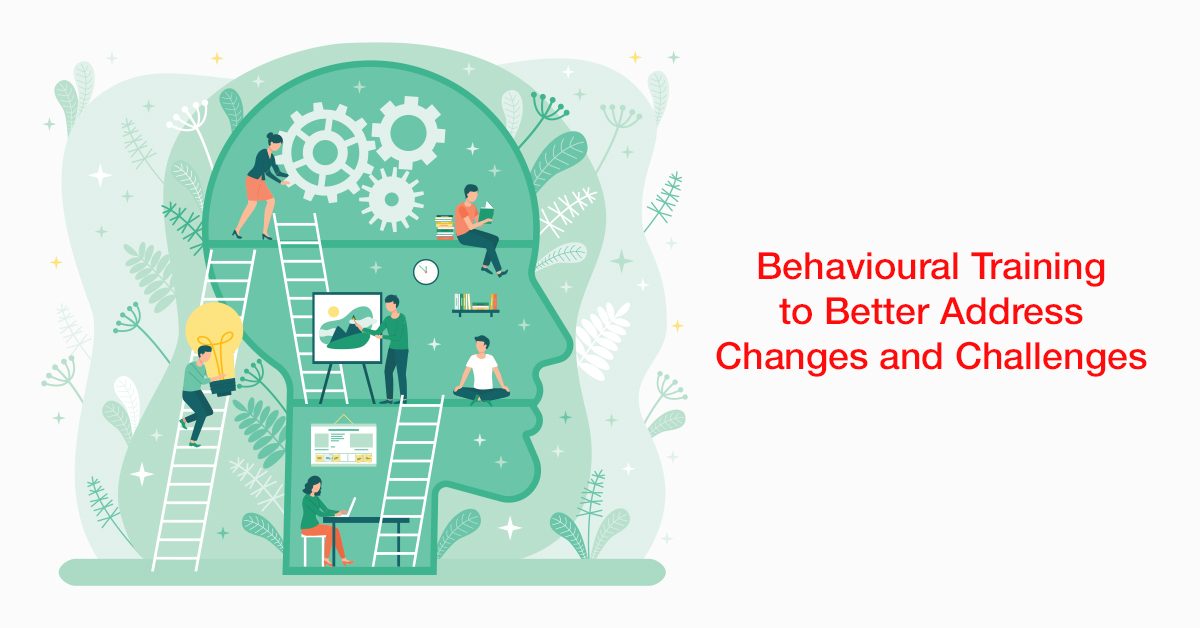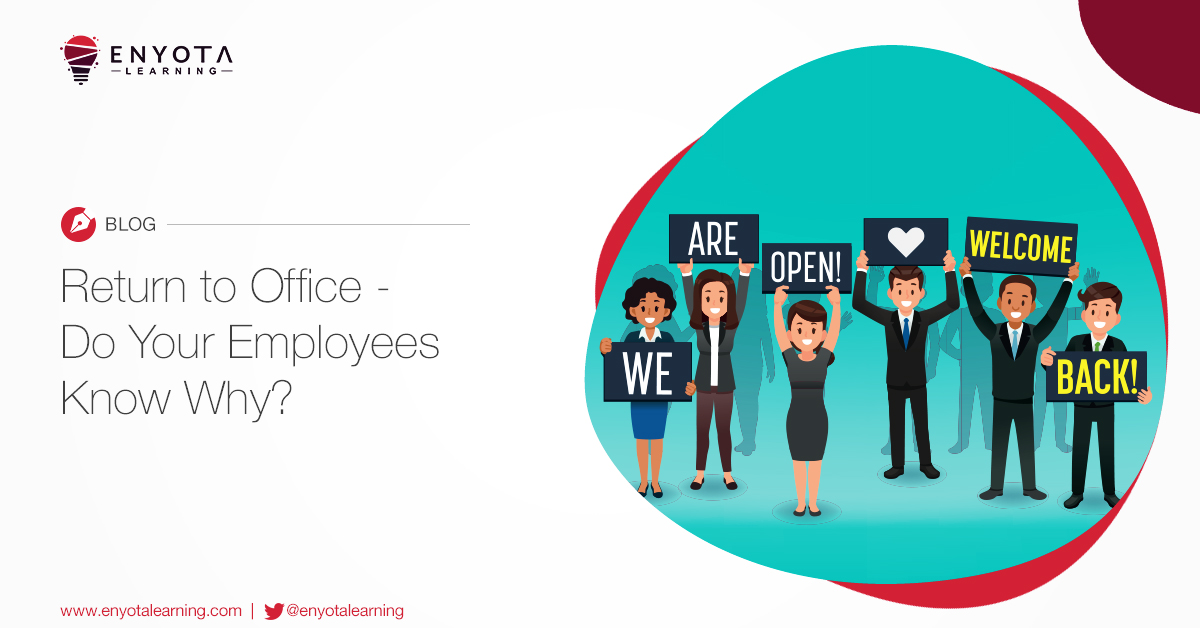
How to truly become a people inclusive organization:
- Introduction to what is inclusion at work
- Why are organizations working hard to make their workplace more inclusive
- Steps that companies can take to make their workplace more inclusive
- Our services in developing custom eLearning courses to promote inclusion at your workplace
‘Inclusion at work’ is arguably one of the most important topics at the modern workplace. HR teams of some of the biggest corporate names are working relentlessly to transform their organizations into truly inclusive entities. To name a few, we have LinkedIn which makes LGBTIQA+ rights and freedom very important at their workplace. This is something that 3M follows closely as well.
Companies like Adobe whose employee base consists of 34% women, additionally managed to recruit 18% of their new US candidates for 2020 from an under-represented community.
And finally, there are organizations like Booz Allen Hamilton with an employee base of 26,000 people which managed to score a 100% on Disability:IN’s ‘Best Place for Disabled Employees to Work’ criteria.
Inclusivity of employees is also taken seriously at our custom eLearning development agency. We at eNyota Learning take pride in our ability to maintain a culturally diverse workplace where people with all kinds of thought processes and belief systems work together. The decision to be more inclusive was not difficult since eNyota was founded on the principles of giving everybody an equal chance.
The need to be inclusive was conveyed to the HR department during the very early stages of eNyota. Employees were given several ‘safe places’ both online and offline to discuss their thoughts and feelings. Additionally, eNyota’s HR team on several occasions went above and beyond to organize events where more employees could contribute towards making the workplace conducive for everybody. And all of this was managed by quickly implementing training modules to convey the message of being a ‘totally inclusive workplace.’
This can be summarized by what Diana Fowler, Head of Customer Success at eNyota Learning has to say, “Inclusion in the workplace is an important factor to consider. Employees need to be treated fairly, irrespective of their gender, race, sexual orientation, social status, or age. Everyone deserves to have an equal opportunity to contribute to the growth of a company, to their own personal goals, and to also feel safe and heard. Each person’s perspective, thoughts, and passion can truly help contribute to the team’s as well as the company’s goals.”
Basically, every year some of the biggest organizations are working towards hitting the target of complete inclusion and they are spending a good part of their budget towards realizing these goals.
So Why Are Organizations Working So Hard Towards Achieving Complete Inclusion at their Workplace?
Well, studies show that an inclusive workplace generally generates up to 3x more profit than an exclusive workplace.
You may ask how workplace inclusion manages to increase productivity and add to the bottom line, here is how:
- When fewer people feel valued at the workplace for any set of reasons, their productivity and will to perform is stunted.
- Companies who are known and openly advocate about their all-inclusive work culture tend to attract better talent than those that do not. This is because the idea of ‘inclusion’ is attributed to people with higher IQ and EQ. These people are seen as advocating for inclusion and thrive in diverse environments. Imagine if Google turned down Sundar Pichai’s rise to the top of the board, where would that have left Google? And wouldn’t some other organization use Pichai’s expertise to their advantage?
- Companies with an inclusive hiring policy do not turn down deserving talent based on some inhibitions with regards to the talents’ race, nationality, sexual orientation, and preferences. Rather they welcome such varying personalities with open arms in a bid to create an exciting workplace atmosphere. However, what matters most here is that by excluding people based on any non-work or performance related criteria, organizations are limiting their reach to talented and deserving candidates.
- Diverse leadership teams tend to encompass a global vision. This makes such teams naturally better at successfully tapping into thousands of global markets located across continents. Think about it as people with diverse thoughts and belief systems coming together to take their organization beyond its existing boundaries.
- Diverse teams are also better at coming up with stronger problem-solving actions and ideas because of the varying talent-base and their varying experiences and thought processes.
So now that we know that creating an inclusive environment is beneficial to the bottom-line of your organization, what steps can your company take to make its employees feel more inclusive?
Training Your Leaders, Executives, and Employees on the Importance of Inclusion
Now unless your company was founded on the principles of employee inclusion or every member among the top-echelon of your organization is onboard with the idea of being more inclusive, you cannot do much. Except for introducing the idea of inclusion to everybody using informative training content. A good way of doing this is by designing custom training on ‘what is’ and the ‘benefits’ of employee inclusion.
There is no harm in saying or admitting that sometimes it is the top management that may need training. As an HR, if you see that a single or a host of exclusive policies seem to discriminate employees based on things like their job roles, genders, or views, it may be time for you to bring the downsides of excluding employees to your management’s notice.
Simultaneously the need to be inclusive is a mindset that your employees need to build as well. Afterall, it is within your employee circles that most of the inclusion or exclusion takes place. It happens amongst groups of peers that are formed withing every organization based on their teams, departments, job-roles, workplace status, and so on.
Training to bring awareness on the importance of inclusion, fair treatments, and valuing the supposed non-conforming beliefs of individual or a group of employees is crucial to bringing about a balance at the workplace.
Form a Board Responsible for Ensuring Inclusion
Expecting the HR department alone to ensure employee inclusion is asking for too much from one department.
What you need is a board or a taskforce consisting of top-level managers, one from each department preferably coming together to ensure that not a single employee falls through the cracks or feels excluded. The icing on the cake would actually be an ‘inclusion board’ that itself consists of managers coming from diverse backgrounds and walks of life.
This is a board in charge of taking decisions on the type of training that needs to be rolled out, what stand does the company collectively want to take on certain inclusive related global topics like LGBTIQA+, black lives matter, and women empowerment to name a few. Additionally, this board is to be the ‘ear’ that employees want to talk to, and the ‘mouth’ that communicates about the ways of bringing this change to the management committee above them.
Create an Inclusive Hiring Processes
Not surprisingly, most of the exclusion happens even before an employee joins the organization. It happens during the recruitment stage. Unless hiring managers are not trained to understand why it is important for them to ensure a diverse and inclusive workspace, there are possibilities of bias creeping in based on a range of factors.
This unwarranted bias will lead to excluding candidates. And sadly, this exclusion is not based on the demerit of any work-related matter or qualification of the candidate. Rather, it is because candidate appears different when compared to the hiring managers’ conformist views of what a perfect employee should be and what they think their higher ups are looking for in a candidate that they need to finalize.
There are some innovative ways to stem out exclusion from the hiring process early and quick. Many organizations now ask candidates if they’d wish to be referred to as a male, female, gender fluid, or rather ‘just not state’ anything. This information once collected is hidden from interviewers till the interview cycle is completed. Some other information that is also hidden revolves around the disabilities and special needs of employees. Sure, the people who need to know about the disabilities and special needs of a candidate are informed. But disclosing such information to anybody who does not need to know about it is strongly discouraged and not allowed as stated within the regulations laid down by the EEOC. This is so that nobody feels excluded.
Another way is to set a ‘hiring quota’. A quota which mandates hiring managers to hire a fixed percentage of new employees belonging to minorities, groups, with disabilities, and even gender specific.
Create Inclusive Spaces
Inclusion happens when people get the opportunity to come together, talk, share experiences, discuss, and be appreciated by everybody. It is about giving employees an equal and fair chance to contribute towards the stories that an organization writes along its way. And even if directly contributing to the decision-making process of a company is not possible, it is always great for companies to provide a safe space where views can be shared free from scrutiny and judgment.
Luckily for companies around the globe, the internet is full of applications that allow employees to just communicate and express themselves, both formally and informally. Think of applications like Basecamp, where boards are created based on topics and employees enjoy open discussions. Or even Skype, where an employee could potentially message the CEO of the company directly or be a part of many groups where problem and solutions are shared. Creating an inclusive space is all about giving employees a place where they can just be themselves.
Inclusion Also Extends to Beyond Your Company’s Boundaries
As stated in the opening line, “inclusion is a state of mind”. Something that an organization must ingrain into its own DNA. And what else can make a better case for inclusion other than treating your own customers correctly?
When we hear about training for the customer-facing staff, most imagine it to be compliance, service quality, product knowledge, communications, negotiations, and other related training. But how do you classify training intended to stop your employees from excluding customers because of some type of a bias?
We think such training is also a part of inclusion. More specifically, it’s when companies are building an image of inclusion of themselves in the eyes of its current and potential customers.
If we think about it, some companies are already knee-deep in creating an exclusive environment, where their customers are different from customers of other companies based on a host of factors like spending ability, social status, and walks of life. Sure, one can argue about these practices being more driven by the type of product or service an organization is offering.
But then again, a study by Harvard states that buying expensive stuff does not make anybody happy. So then, what benefits are the so-called inclusive customers of such high brands really deriving from such purchases? Moreover, what sense of ‘inclusion’ are such brands trying to convey to their customers when most of them aren’t even happy with their purchase?
A good example to note here is that of Apple Inc. Apple Inc. used to manufacture products that were always considered to be highly priced. However, over the years, Apple has changed that image in the minds of consumers by launching up to 5 versions of their mobile phones, with at least two options being affordable and the rest being placed in the expensive category. This is one strategy which clearly paid off for Apple since the cheapest iPhone model from 2020 was the one that the company sold the most! This is a good example of the leadership understanding the need for inclusion along all levels, including customers.
On a Concluding Note
Indeed, inclusion is important now more than ever. Businesses that fail to appear as truly inclusive will not only miss out on talent but lose out on customers as well. Word of mouth and views quickly spread owing to social media and influencers. Organizations should avoid being put in a bad light because of regressive thought processes. Rather, they should focus more on becoming a global corporate which believes in including people.
Timely training and educating leaders, executives, and even employees have time and again solved similar challenges for top global brands. And the same can be recreated for your organization as well. Inclusion and diversity is a hot topic and every organization should ensure their management and employees are trained and assessed on this. We are eNyota Learning with over 15 years’ experience in creating custom eLearning-based training used by global corporates to spread the word of inclusion along all their levels. If your organization is interested in building similar courses, reach out to us at contact@enyotalearning.com or click this form.




